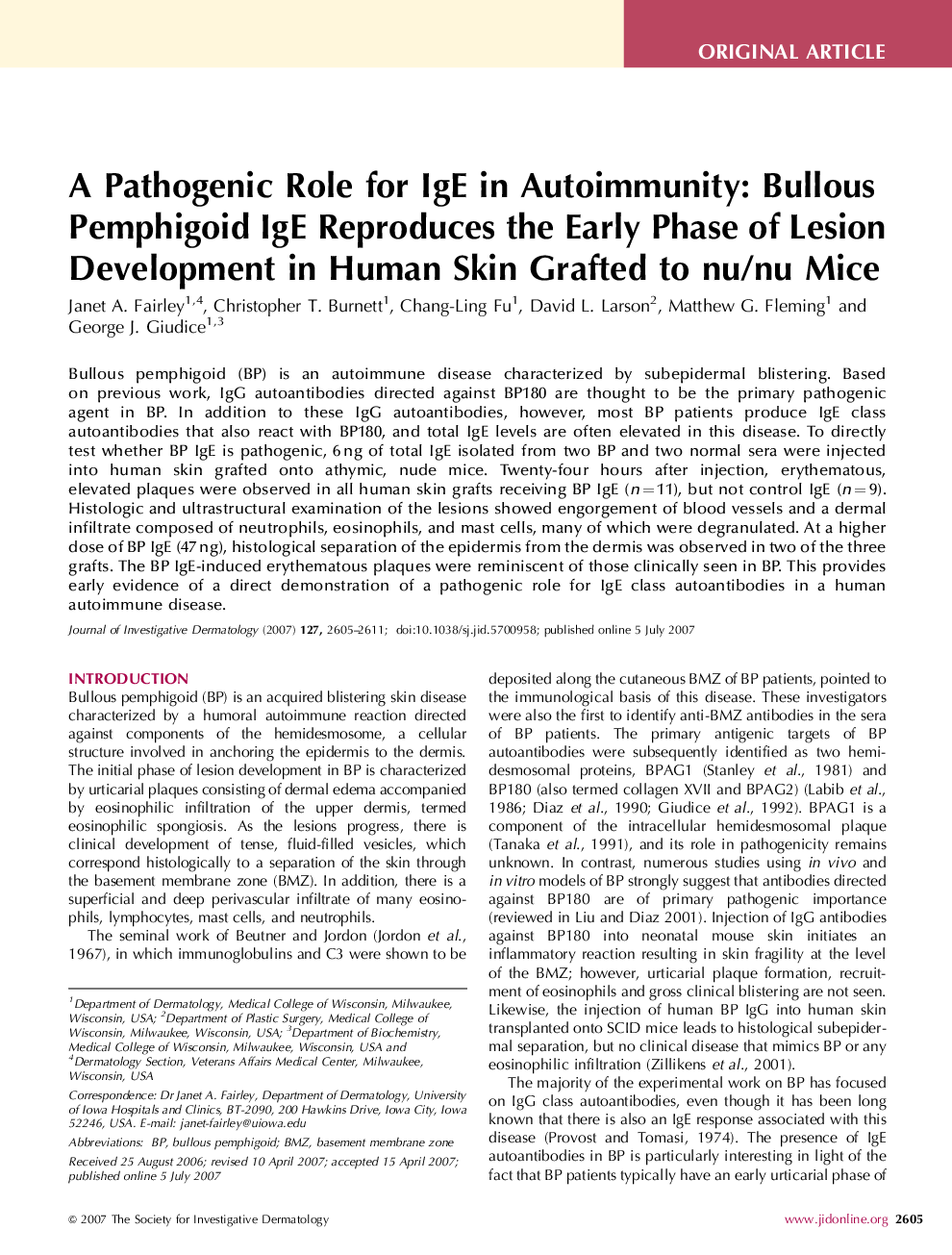| کد مقاله | کد نشریه | سال انتشار | مقاله انگلیسی | نسخه تمام متن |
|---|---|---|---|---|
| 3217343 | 1203599 | 2007 | 7 صفحه PDF | دانلود رایگان |

Bullous pemphigoid (BP) is an autoimmune disease characterized by subepidermal blistering. Based on previous work, IgG autoantibodies directed against BP180 are thought to be the primary pathogenic agent in BP. In addition to these IgG autoantibodies, however, most BP patients produce IgE class autoantibodies that also react with BP180, and total IgE levels are often elevated in this disease. To directly test whether BP IgE is pathogenic, 6 ng of total IgE isolated from two BP and two normal sera were injected into human skin grafted onto athymic, nude mice. Twenty-four hours after injection, erythematous, elevated plaques were observed in all human skin grafts receiving BP IgE (n=11), but not control IgE (n=9). Histologic and ultrastructural examination of the lesions showed engorgement of blood vessels and a dermal infiltrate composed of neutrophils, eosinophils, and mast cells, many of which were degranulated. At a higher dose of BP IgE (47 ng), histological separation of the epidermis from the dermis was observed in two of the three grafts. The BP IgE-induced erythematous plaques were reminiscent of those clinically seen in BP. This provides early evidence of a direct demonstration of a pathogenic role for IgE class autoantibodies in a human autoimmune disease.
Journal: Journal of Investigative Dermatology - Volume 127, Issue 11, November 2007, Pages 2605–2611